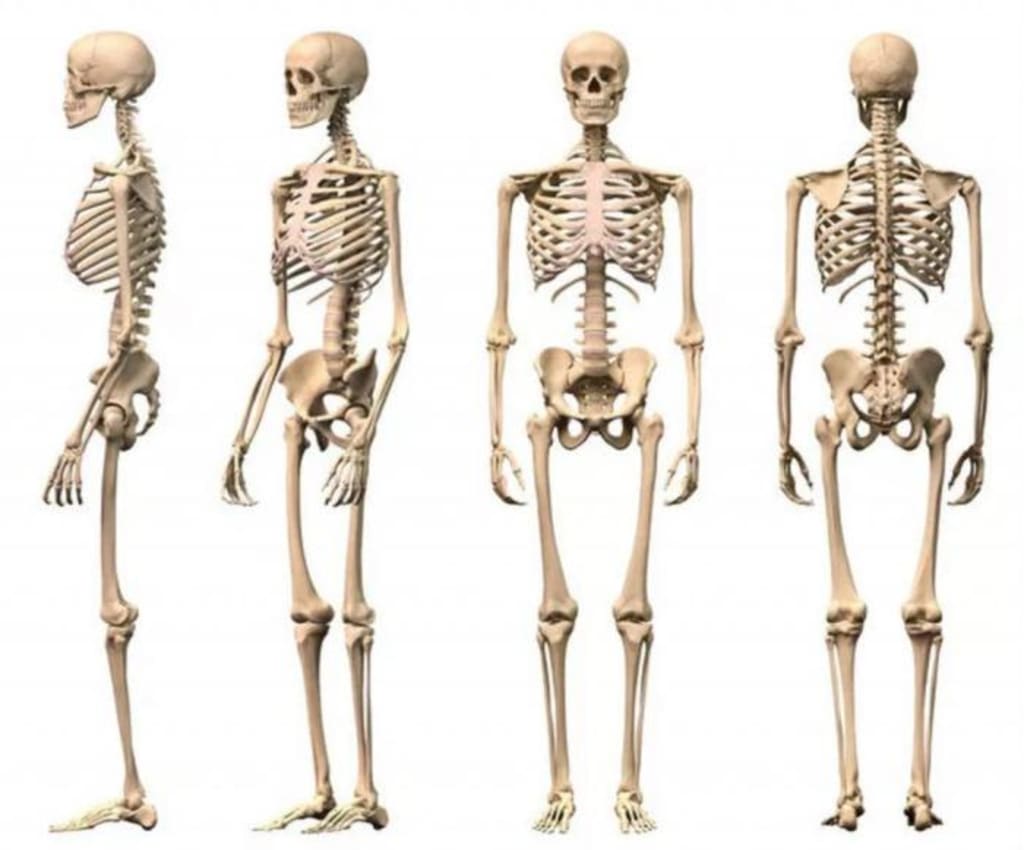Europeans and Americans have 206 bones, but Chinese have only 204. Why do Europeans and Americans have more?
Europeans and Americans have 206 bones, but Chinese have only 204

Although it is said that Chinese and Europeans belong to two different races, they still cannot escape the structure of primates, so why do Europeans and Americans have two more bones than Chinese, and where do these two bones grow? ?
206 human bones
In fact, when human beings did not use all fours to walk in the beginning, there were far more than 206 bones. Human ancestors had nearly 300 bones. As humans changed the walking square from walking on all fours to walking upright, the result The human skeleton began to change continuously, and this change was mainly reflected in the evolution of the lumbar spine and spine.
This is not only revealed in the ancestors of human beings, but also manifested in human infants and young children. You may think that human bones are 206 pieces from birth to growth. In fact, this is not the case. Human bones in infants and young children have not yet Fully developed, the number of bones in a baby's body is about 305. And this number increases with age, and the number of bones also shows a decreasing trend. When a person becomes an adult, the skeleton is basically finalized, and its number stabilizes at the 206 we know.
The reason why human bones decrease as they grow is mainly because during infancy, some of the bones in our body are not fully developed. As we age, some connected bones will merge into one piece. children, resulting in a decrease in the number of human bones.
Where did the two bones go?
Now that we understand the evolution of human bones, why do Europeans and Americans have two more bones than most Chinese and Japanese? Where are these two bones missing? Compared with Europeans and Americans, what kind of impact will the Chinese lack of these two bones?
This bizarre conclusion comes from an unintentional experiment by scientists. When scientists conducted skeletal examinations on 615 Asians of different ages and genders, they found that 75% of them had only 204 bones, which is similar to the 206 bones commonly found in Europe and America. There is a big difference, and this phenomenon is not rare. Scientists continued to expand the sample of this experiment and found that most East Asians generally only have 204 bones. Where are the two missing bones?
Comparing the two mainstream views, the main difference between the two bones is the difference between the phalanx or the hip joint.
1. Toe bone
Anthropologists generally believe that Europeans and Americans generally have three little toes, while Chinese have only two, one less on the left foot and one less on the right foot, exactly two bones are missing.
Scientists believe that the main reason for this phenomenon is that Europeans and Americans are taller than Asians, and their bones and muscles are heavier than those of the yellow race, so in order to bear heavier weights , The toes of Europeans and Americans have generally evolved a third section to increase the load-bearing capacity of the feet and make their bodies more stable, so Europeans and Americans will have an extra phalanx. So does this mean that Europeans with two more toes must have a physical advantage over Asians?
In fact, you can't think so. According to the data analysis of scientists, two toes are enough to support human activities. The yellow people use two toes to walk, which just proves that they can complete the corresponding labor with less resources, which is a more Advanced evolutionary methods, these two views have actually been debated for a long time.
Here I will say a fair word, two phalanges or three phalanges, there is actually no difference between them, it is just a natural selection caused by the environment we live in. In the face of the complex terrain of East Asia, two phalanges The formed long and flexible toes are better for climbing and picking work.
2. Hip
Europeans and Americans have more of these two bones than Asians. There is also a saying that there are two more cartilages in the hip joint, which is located in the middle of the waist and the pelvis.
In the infancy of human beings, the Chinese, like Europeans and Americans, consisted of three bones, the ischium, pubis and pubic bone. With growth and development, Europeans and Americans and East Asians began to differentiate. The three hip joints of the Chinese The cartilage between the bones begins to show signs of merging, making up the hip bone. The European and American people have not changed, so the Chinese have two less cartilage than the European and American people.
There are many differences in human skeletons
The most obvious manifestation of the skeletal differences of different races is in the human skull and human limb skeleton. First of all, let's start with the skull.
Talking about the skull will involve two issues that everyone is most concerned about. One is whether the size of the skull can really affect the IQ, and the second is the effect of the skull on the appearance of a person.
Then we will answer them one by one. First of all, there is no doubt about the influence of the skull on the appearance of the human body. We always say that to look at a person's appearance, we should not only look at his skin, but also his bones. Skeletal features vary widely.
Many East Asians pursue the high eyebrows and deep eye sockets in Europe and the United States, but no matter how hard they try, they can't achieve it. This is caused by the differences in the human skull. The later medical beauty can only change the skin, even if it can be changed. Bone phase, but also pay a great price.
Another question is that compared with Europeans and Americans, the real skulls of Chinese people are wider and larger. Does this mean that Chinese people must be smarter than Europeans and Americans? There is no authoritative conclusion to answer this. The average brain development level of ordinary people only accounts for 10% of the brain volume. Even if your brain volume is larger than other races, it is also developed by 10%, and the impact on it is not obvious. Therefore, the size of the brain skull affects IQ A debatable proposition.
The biggest difference between European and American races and Asian races is also reflected in their skeletons. Generally, European and American skeletons are larger than East Asians, so Europeans and Americans look more burly and taller than East Asians. Does that mean that Europeans and Americans are destined to be taller than East Asians. In fact, this is not true. A large part of the reason is that due to the rapid development of European and American countries, their children eat far more nutrition than our contemporary Chinese and Japanese. a lot, resulting in their development will be better.
Therefore, before the reform and opening up, we saw that the height of the Chinese people was generally not as high as that of the European and American races of the same period, but we see that now, the height of children is higher than the generation, which is enough to break the fact that we will definitely be short for East Asians. Stereotypes, this is not groundless, our neighbor Japan, the nutrition improvement program implemented in the last century, has made the average height of Japan achieve a big leap in the past 50 years, which is enough to show the importance of nutrients for bone development. .
In fact, whether it is 206 bones or 204 bones are different expressions of genes, we can't say which one is higher and nobler. Innate genes are important, but the later efforts should not be underestimated.
About the Creator
sayre laylah
Tired of monotonous climbing moves, but every step is close to the top
Enjoyed the story? Support the Creator.
Subscribe for free to receive all their stories in your feed. You could also pledge your support or give them a one-off tip, letting them know you appreciate their work.






Comments
There are no comments for this story
Be the first to respond and start the conversation.